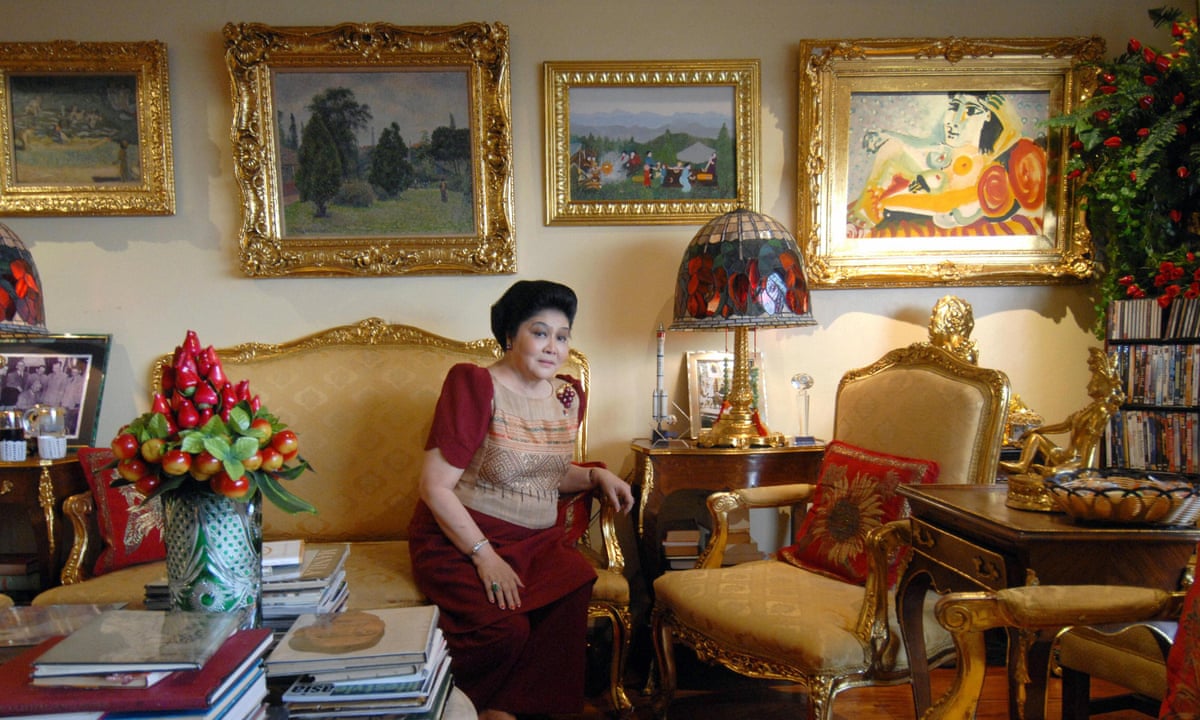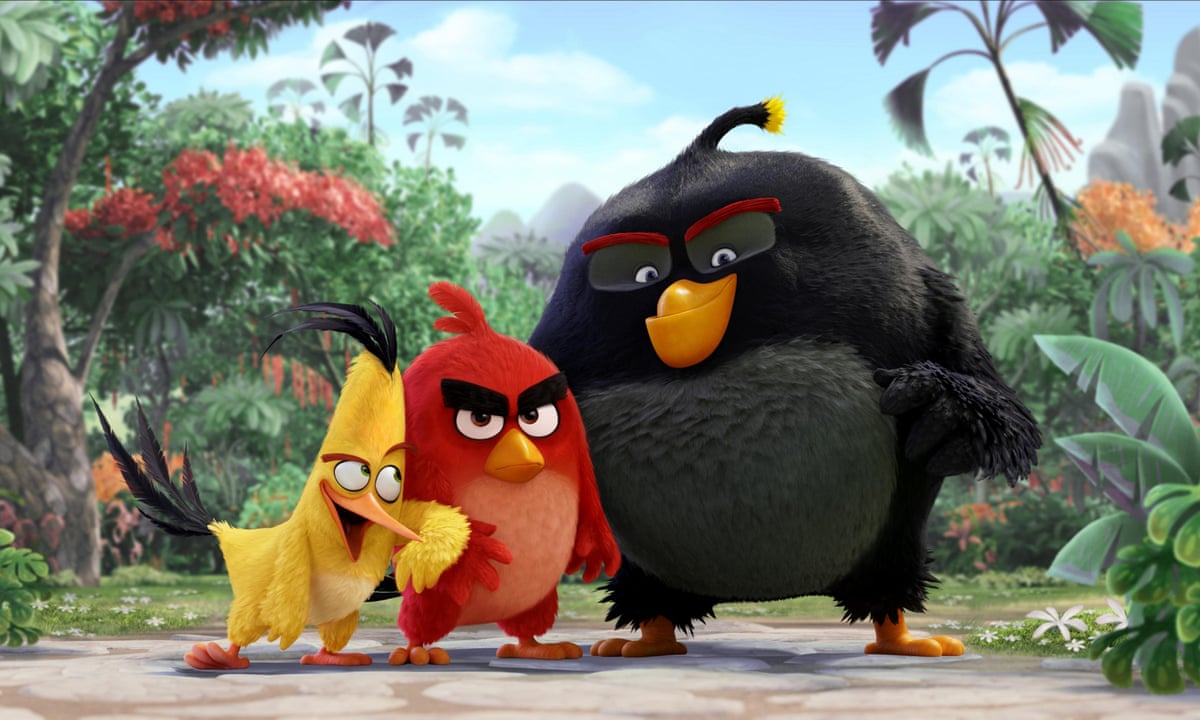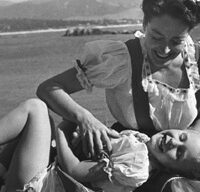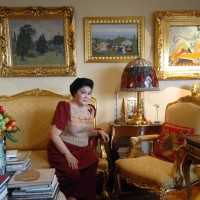In 1978 Christina Crawford exposed her filmstar mother Joan as a cruel, abusive alcoholic in the memoir Mommie Dearest. On the book's reissue, she gives her first interview in a decade to Elizabeth Day
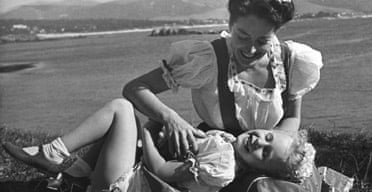
Christina Crawford was 13 when she stopped believing her mother loved her. It was a young age at which to come to such a startling conclusion, to have one’s belief in the benignity of the world so profoundly altered. But it was at this age that she remembers her mother grabbed her by the throat, punched her in the face and slammed her head against the floor.
‘You never forget that,’ Christina says now, 55 years later. ‘It was up close and personal. She came this far from my face, and you could see it in her eyes, you can see if someone is trying to kill you.’
It was a side of her mother that no one else ever saw. To the wider public, Christina’s mother was not the abusive parent, prone to uncontrolled bouts of fury. She was not the alcoholic, given to occasional bursts of sporadic violence. She was not the tyrannical harpy who apparently let rip behind closed doors. To everyone else she was simply Joan Crawford, Hollywood movie star.
At the height of her fame in the 1940s, Crawford had a considerable reputation to uphold. She was one of the original studio ingenues, an actress who overcame an impoverished childhood to become one of the highest-paid women in the business. Over a career spanning five decades, she starred alongside Clark Gable in Possessed, Bette Davis in What Ever Happened to Baby Jane? and won a 1945 Best Actress Academy Award for the title role in Mildred Pierce. She lived in a sprawling house in Brentwood, Los Angeles and used her wealth to adopt and raise four children, including Christina, an act much lauded in extensive magazine spreads about her happy family life. But to Christina, the public image was a gilded lie.
‘It was the hypocrisy of it that was so difficult,’ she says. ‘People fantasised about who or what I was; that I had this privileged, wealthy, film-star family life. I didn’t have any of that.’
A year after her mother’s death of a heart attack – aged 69, 72 or 73, according to which birth date you believe – Christina’s frustration at the discrepancy between her mother’s private existence and her public reputation bubbled over. In 1978 she published Mommie Dearest, a blistering autobiography that portrayed Joan Crawford as a sadistic perfectionist, an alcoholic prone to unpredictable squalls of maternal fury who would punish the mildest misdemeanours with disproportionate force.
It was the first tell-all celebrity memoir, the first book to talk so openly or with such clarity about a childhood allegedly punctuated by psychological and physical abuse. It caused a sensation, left an indelible imprint on the cultural consciousness and stayed at the top of the New York Times bestseller list for 42 weeks. In the years that followed the children of Bette Davis and Bing Crosby wrote similarly excoriating parental memoirs, and the 1981 film adaptation starring Faye Dunaway became a cult hit. Joan Crawford’s reputation took a battering so ferocious that it has never fully recovered.
To this day most people associate her with an infamous scene in both the book and the film in which she launches into a vicious tirade after discovering Christina’s dresses hung on wire clothes hangers. ‘No wire hangers!’ entered the vernacular as shorthand for neurotic maternal instability. On another occasion Christina recalls her mother dragging her from bed in the middle of the night, aged nine, to beat her over the head with a can of scouring powder for leaving soap streaks on a bathroom floor.
Now, 30 years after publishing Mommie Dearest, Christina Crawford is reissuing the book with a new introduction and afterword, supporting testimonies from contemporaries and more than 100 pages and photographs that were cut from the 1978 edition.
She is not without her detractors. Over the years several of Joan Crawford’s peers, including her first husband, Douglas Fairbanks Jr, and the actress Myrna Loy, have disputed Christina’s recollections, accusing her of embellishments and make-believe. Two of Crawford’s other adopted children, twin sisters Cathy and Cindy, publicly claimed Christina lied, insisting their mother was a loving parent, firm but never abusive. Although three decades have passed, the sibling feud is unresolved. Both Cindy and Crawford’s adopted son, Christopher, died recently but mutual animosity remains deeply entrenched across the generations. Casey LaLonde, Cathy’s 36-year-old son, tells me by phone from his home in Philadelphia that his mother still remembers ‘a very loving household. She [Joan] was a very affectionate, supportive, doting mother, a wonderful person. I have always been very careful not to call Christina a liar but clearly she had a completely different experience from my mother and my Aunt Cindy.’
In March a new biography of Joan Crawford cast Christina in an even less flattering light. Not The Girl Next Door by Charlotte Chandler included interviews with the actress herself in which she railed against her adopted daughter, accusing her of ingratitude. Cathy Crawford was quoted as saying that Christina ‘had her own reality … I don’t know where she got her ideas. Our Mommie was the best mother anyone ever had.’
Until now Christina, 68, has not responded. But when I meet her at her home in Idaho for her first newspaper interview in 10 years she is unrepentant. Although she acknowledges that she could be a stubborn, occasionally obstreperous child, she points out that her version of events was supported by her adopted younger brother, Christopher, with whom she shared a room until she was 10. ‘Cathy has been very vocal about her experience, and that’s her privilege, but there was eight years’ difference between us. She was two when I was sent to boarding school. She couldn’t have known anything about my or Chris’s experience – zip, nothing. She wasn’t there – she wasn’t even born when I was adopted.’
Perhaps, I venture, the twins had more docile personalities and were more capable of submitting to their mother’s controlling nature? She laughs sharply. ‘Maybe. What my mother wanted was fans and puppies, not human beings. She was as close to being a totally manufactured person as I’ve ever met.’
From the beginning Joan Crawford was a fabrication; a myth created by the movie moguls. She was born Lucille LeSueur in San Antonio, Texas, and her father walked out when she was a few months old. The family scraped by but it was a deprived upbringing, and it left Crawford with an abiding hatred of dirt and disorder. Determined to escape her background, she became a Broadway chorus girl and was spotted by studio bosses at Metro-Goldwyn-Mayer in 1924. They offered her a contract and ran a magazine competition to choose a new name after deciding her surname sounded too much like ‘sewer’. Joan Crawford was the winning entry. She cut off ties with her family, clawed her way to the top and reinvented herself as a legend without a past.
Photographs from this time immortalise an extremely striking woman, cheekbones thrown into relief by dramatic lighting, lacquered eyebrows arching over lambent dark eyes. There is also a determination in her jaw-line and the intimation of challenge in her gaze. The pictures are arresting rather than beautiful, strong rather than delicate.
Her forceful personality and strident physical attractiveness meant she was used to getting what she wanted. She married four times and had a string of affairs with both men and women, including a one-night stand with Marilyn Monroe. Unable to have children, she adopted, employing private brokers to ensure that the normal restrictions against single, divorced women did not apply. One of the five children she originally took in was reclaimed by his furious birth mother within days. Christina was successfully adopted in 1939, Christopher in 1943 and the twins four years later in 1947.
It was, from the outside at least, a fairytale family life for four unwanted babies who otherwise would have languished in care homes. But all was not as it seemed. Although Joan told Christina that her biological mother had died in childbirth, she was, in fact, still alive. It was only in the early 1990s, when Christina started researching her own family history, that she discovered the truth. By this time both her parents (a female student who had an affair with a married engineer) were dead.
Christina remembers a childhood shaped by her mother’s violent mood swings – one moment buying her extravagant party dresses, the next spanking her so hard with a hairbrush it broke in two. ‘At first I cried and then I didn’t. The only power I had left was not to show anything.’ At night she says her brother Christopher was strapped into bed with a canvas harness to prevent him from walking to the toilet.
Does she believe Joan Crawford ever loved her? ‘Maybe in the very, very beginning but I think she wasn’t a healthy person. If a lot of what she did had happened today, that woman would be arrested and taken to jail.’
Why did no one intervene? ‘That was the worst thing – that nobody did. Because everyone knew. Our staff, certain neighbours … But she was a celebrity, they had jobs they didn’t want to lose, and by the end there was no hired help any more because she was so difficult to work for. The agency stopped sending people.
‘It was complete and total hypocrisy between the public and the private. She adopted us for the publicity,’ she says. ‘I have tremendous concerns about celebrity adoptions by people like Madonna and Angelina Jolie. From the adoptee’s point of view, it is vitally important to know who they are, where they came from, or it can have profound medical and psychological effects.’
When I ask if she thinks today’s stars are adopting for publicity, she snorts derisively. ‘What do you think? Why are they so keen on getting the maximum newspaper and magazine coverage?’
Joan Crawford’s fits of anger, her drinking and obsession with cleanliness got more pronounced as her career began to unravel. At 37 she was declared ‘box-office poison’ by studio executives and her self-esteem never truly recovered. For a woman whose own sense of worth had been predicated on her work, it was a devastating loss.
All the while, the Crawford family’s celebrity lifestyle was routinely depicted in lavish magazine photographic stories detailing the children’s plentiful birthdays and Christmases. Behind the gloss and the popping flashbulbs, however, the truth was very different, says Christina. Each year the children were allowed to choose one gift while all the others were repackaged and given away to local hospitals or charities. They were then required to write an endless round of thank-you cards for the gifts they had not been allowed to keep, and each card would be checked by their mother, returned to them with annotations and corrections until they eventually met her exacting standards. ‘The process was turned into a forced march,’ says Christina. ‘It was all about power and deprivation. As a child, I was totally without trust. I felt entirely alone.’
She became used to loneliness. At 10 she was sent to boarding school but the bizarre, random outbursts of maternal rage continued through the holidays. After graduation she briefly became an actress before training in communications and working in the marketing department of Getty Petroleum. Since the publication of Mommie Dearest she has written several more books on child abuse and is now an advocate for adoptees’ rights. She has three failed marriages – her second to the film producer David Koontz, with whom she raised a stepson – and made a conscious decision not to have children of her own.
‘I’d never seen a working marriage or relationship so I simply didn’t know how to do it,’ she says. ‘I really didn’t have the skills for parenthood, and for a while I had a ferocious temper. Those two things are not a good combination so I took a logical, reasonable decision not to have children, and it’s one I’ve never regretted.’
For the past 15 years Christina has lived in rural Idaho in a modest clapboard home on a vast Indian Reservation, surrounded by conifers and grassy mountainside. The only other buildings nearby are a church and a dilapidated general store. She does not entirely fit in here. She is dressed in a smart moss-green trouser suit, with a low-cut top and espadrille wedges in the same shade of pink. Her hair is dyed blond and her eyes, a clear, watery blue, are obscured for much of the time behind sepia-tinted wraparound sunglasses. She is extremely polite and hospitable, given to the occasional unexpected fit of guttural laughter.
She is also, I think, very mistrustful. Many of her answers are delivered with a penetrating stare, a wariness in her voice. When I ask if money was a motivating factor for reissuing the book, she looks at me straight on for several seconds. ‘The reason I am reissuing it is because it remains one of the only real, authentic stories of family abuse, and it is important it is continually available.’
Inside her open-plan sitting room, it strikes you immediately that there are no photographs, as if the interior has been stripped bare of anything that might remind her of the past. The walls are hung with anonymous knick-knacks – a framed print of Shakespeare, a clock that chimes with birdsong on the hour. Yet while Christina says she has spent most of her life trying to extricate herself from her mother’s control, it seems the two are locked in a perpetual grim embrace. Despite a short rapprochement in Joan’s later years, both Christina and Christopher were written out of her will, which stated the decision had been taken ‘for reasons which are well known to them’. Although she successfully contested the will, Christina has never been able to shake off the suspicion that the book was revenge for her disinheritance, nor, when I ask her about it, does she entirely disabuse me of this notion. ‘The attorney told me that the language in that will went way back to the Sixties, and every time the will was rewritten that language was carried forward absolutely intact. So none of the later years had had any impact on her emotionally whatsoever. All the efforts I’d made had been for nothing, and I decided that was enough, and I was going to tell the truth as I knew it.’
She tells me she stopped referring to Joan as her mother several years ago and now calls her ‘my adopted parent’. She has clearly never forgiven her. ‘I think she took absolutely no responsibility for changing her behaviour. Forgiveness is a two-person process.’
But it is hard to escape the conclusion that if Christina really wanted to sever the ties that bind her she would not be reissuing the book that links her permanently with the mother she now disowns.
Certainly, Cathy’s side of the family have been left infuriated by her decision to republish. ‘Christina has said what she said, and everybody heard it the first time round,’ says Casey LaLonde. ‘The book was such a juggernaut, and it devastated [Joan’s] personal and professional career. I just remember her as a normal, loving grandmother who would babysit for us and make us lunch and give us gifts. There was never anything strange or mean about her.
‘The worst part was that Joan wasn’t around to defend herself, which was the most horrible thing ever to have done. It wasn’t courageous.’
Neil Maciejewski, a film historian who runs a Joan Crawford tribute website, concedes that the actress ‘was an alcoholic, she was controlling and she probably wasn’t the best mother, but I’ve talked to so many people who knew her, and my feeling is Mommie Dearest was not an honest portrayal. One person I talked to recently is Betty Barker, who was Joan Crawford’s secretary from the 1930s and knew her till she died. She’s an older woman who would have no reason to lie, and she said that Joan had her faults but she absolutely did not abuse her children.’
Still, it is possible that a movie star so obsessed with protecting her own image, who was so rigorously perfectionist in all that she did, would go to great lengths to conceal any abusive behaviour from outsiders. Christina might be many things – disillusioned, sad, a bit defensive – but she does not strike me as either a fantasist or a liar. And she has her supporters too. The late actress Helen Hayes, whose son played with Christopher, wrote in her autobiography that Joan was ‘cruel’ to her children and that her Hollywood contemporaries were ‘worried to death’ about them. ‘It would have been futile for me or anyone else to protest,’ she wrote. ‘Joan would only get angry and probably vent her rage on the kids.’
Perhaps she could, like so many, have intervened and pricked the bubble of silence, but Joan Crawford was a formidable opponent. When, on that long-ago night, Christina claims that her mother tried to throttle her, a secretary eventually pulled them apart and summoned a juvenile officer to the house. According to Christina, the officer said there was nothing he could do; that she would have to sit it out until she was 18 and could leave home of her own accord; if one more call was made to the authorities Christina would end up in a detention centre. ‘That changed my world view,’ she says, dryly. ‘That the victim could be punished while the perpetrator got away scot free. That made me kind of cynical.’
Cynical, but no longer terrified. ‘The most gratifying part of getting well is that I’m not afraid,’ she says. ‘If she walked in the door now I’d tell her she’s not welcome and could she please leave. Because that’s what I couldn’t do as a child.’
Her voice dips and cracks, so that she is talking in an almost-whisper. She holds my gaze for a few seconds then gets up and busies herself in the kitchen. Even now, so many years later, Christina Crawford does not want anyone to see her cry.
Read more: http://www.theguardian.com/film/2008/may/25/biography.film

